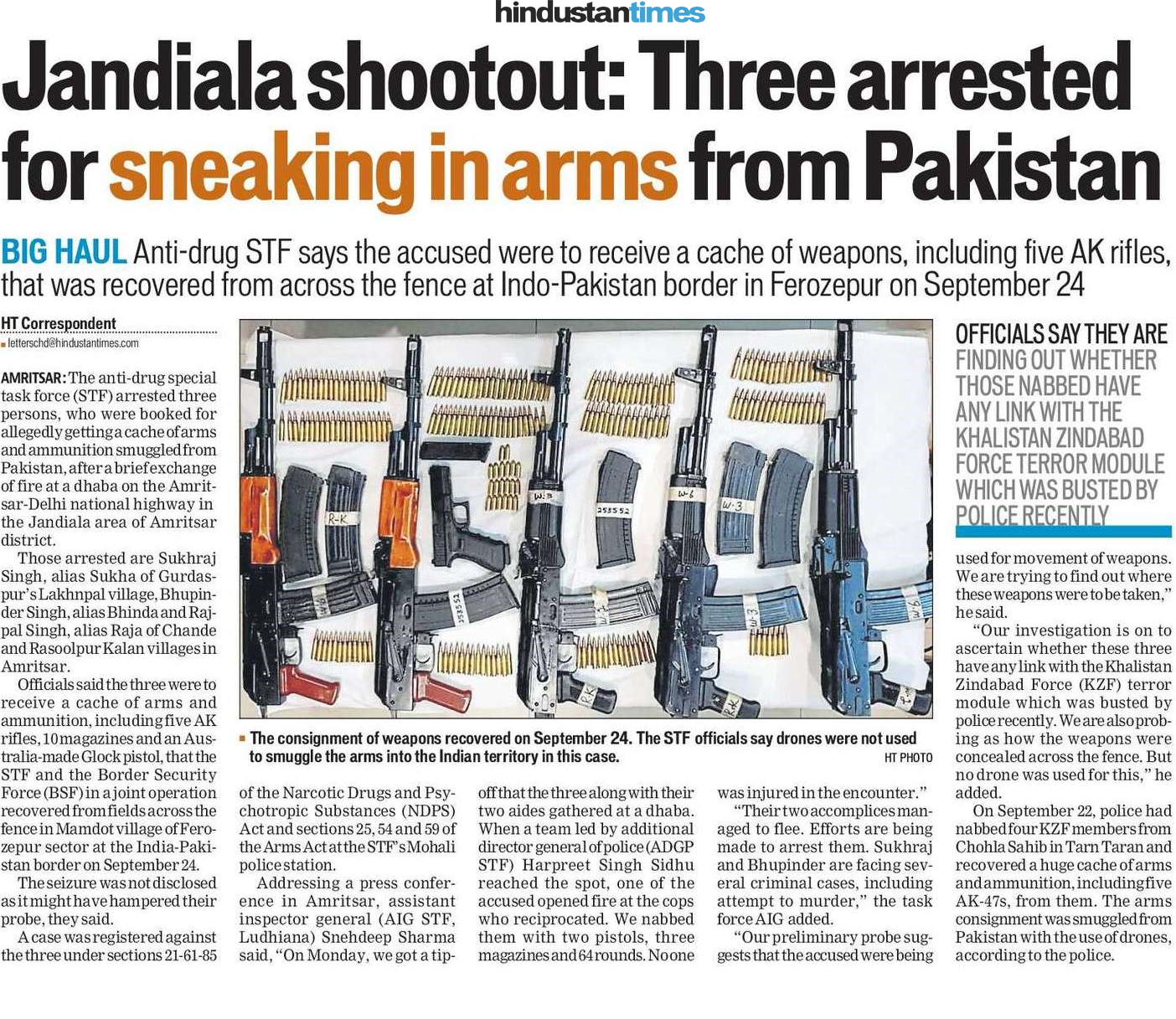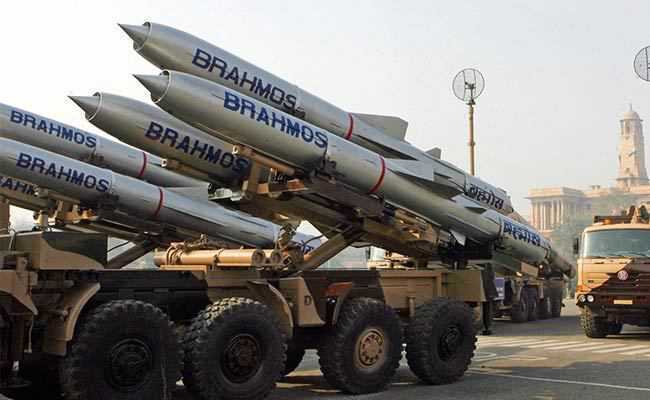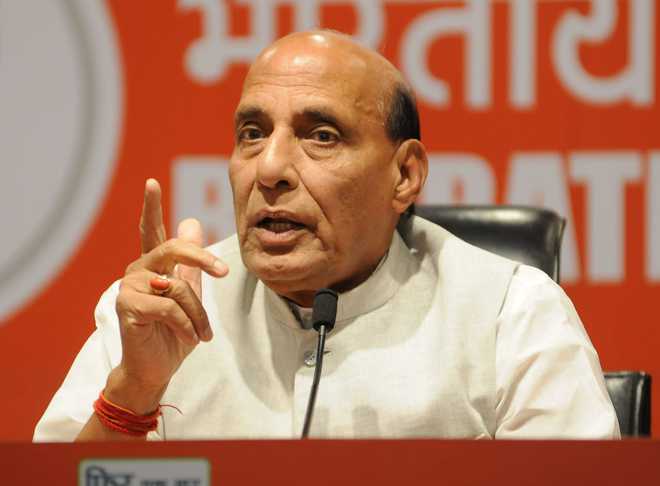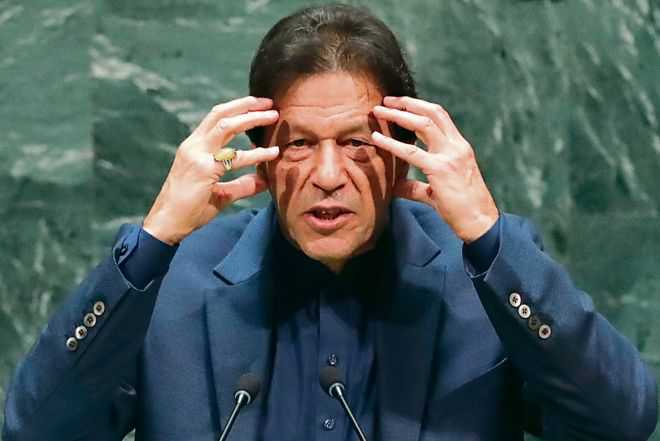
Out of line: Imran Khan’s sabre-rattling at the UNGA against India did not go as per plan; it was frowned upon internationally.
Tilak Devasher
Member, national security advisory board
The 74th session of the UNGA is done and dusted. Playing to the domestic gallery, Imran Khan had his moment of glory during his maiden address. However, in the realistic and practical international arena, it is not the words spoken but the results produced that matter. By the standard of convincing the international community of Pakistan’s narrative on Kashmir, the trip did not measure up to expectations.
In fact, midway through the six-day trip, Imran Khan was forced to admit in New York ‘to be absolutely frank, I am a bit disappointed by the international community. There is no pressure on Narendra Modi to lift the siege’. At the Islamabad airport on his return, he declared that Pakistan would stand by the Kashmiris even if the world didn’t. This was clearly an admission that his hard sell had not worked. No country talked about reversing the changes in Kashmir.
One immediate fallout of his UN/US performance was that the point person who organised all the interactions, Maleeha Lodhi — the Pak Permanent Representative — was shunted out a day after Imran Khan returned to Pakistan. This spoke volumes of the failure of the trip. Quite possibly, she became the scapegoat for his aggressive sabre-rattling at the UNGA that was frowned upon internationally. The UNGA is not really a bull-fighting arena that he made it out to be, thus violating its sanctity.
In Pakistan, the realisation is beginning to sink in that beyond the rhetoric, the speech did not impact the ground realities. There continues to be a wide gulf between Pakistan’s expectations and international realities. Not even Pakistan’s close ‘allies’ were ready to push the Kashmir issue at the international level. Most, including the ummah, have asked Pakistan to resolve it bilaterally. The phrase now being used is that this is going to be a long-drawn struggle.
Imran Khan ascribed lack of support for Pakistan to the fact that India was a 1.2 billion-strong market. Actually, he got it only partially right. What he missed out was that this market was also economically vibrant and the people had purchasing power. In contrast, Pakistan’s economy is in shambles.
To mask the lack of substantive achievement, Pakistan spin-doctors have launched a two-pronged offensive. One, this was the best speech ever by a Pakistani leader in the UN, even better than the ones by ZA Bhutto and Benazir Bhutto in the past. One commentator even called it ‘the speech of the century…which will be a reference used in posterity’. The second is that the speech heralded his arrival on the world stage as a statesman and a charismatic leader. Some have even talked about Imran Khan emerging as the true leader of the Muslim ummah.
Going ahead, Pakistan has two options. One is the continuation of the diplomatic campaign by engaging with the international community to pressure India to reverse the August 5 changes and implement the UN resolutions on Kashmir, focusing on alleged human rights violations and the restrictions. Apart from engaging with the five permanent members of the UNSC, other important countries, the EU and the OIC, it will also zero in on organisations like the UNHRC, Amnesty International, Human Rights Watch as well as sections of the international media to raise a hue and cry about the situation in Kashmir.
The other option is the more muscular one that is being justified on the spurious grounds of preventing a potential genocide in Kashmir. This option includes the use of terror assets that have been carefully nurtured over the decades. Statements have been made about shedding the last drop of blood for the sake of Kashmir. Even diplomats like the former High Commissioner to India, Ashraf Jehangir Qazi, have argued that ‘Pakistan must use all legitimate means (and international law provides them) to ensure that the Kashmiri freedom struggle, including armed struggle is not snuffed out by the illegitimate use of overwhelming force, including atrocities amounting to genocide’.
When diplomats start talking about armed struggle, the level of failure and helplessness can well be imagined. Moreover, such bravado suffers from the infirmities of the Pakistan state and the multiple domestic crises that it faces. The economic and military realities of Pakistan are such that any misadventure would risk jeopardising its very survival.
In between these two options is a third option that is dependent on the ground situation in Kashmir. What Pakistan is hoping for is that when the restrictions are lifted, Kashmiris will take to the streets in hundreds, if not thousands, and, in the words of Imran Khan, there will be a ‘bloodbath’ leading to another Indo-Pak confrontation forcing international intervention. In reality, by talking about a bloodbath, Imran Khan is actually inciting the Kashmiris to become cannon fodder for the sake of Pakistan. It is his incitement, rather than anything that India would do, that has the potential to destabilise the situation.
However, some sane voices in Pakistan have started cautioning that it would be unwise to get too carried away with the current policy of antagonism towards India. As Lt Gen Talat Masood (retd) put it: ‘Such a policy cannot be followed forever and somewhere down the line, Pakistan will need to see how it can strike a balance in order to have some influence on India.’
The bottom line is that Imran Khan’s much-hyped efforts at the UNGA to get the international community to pressure India have failed. Going forward, the sane option for Pakistan would be to realise the futility of trying to aggravate the situation, and instead, accept the new reality in Kashmir. However, Pakistan is not known to be sane when it comes to India. So while hoping for the best, India needs to prepare for the worst.






























































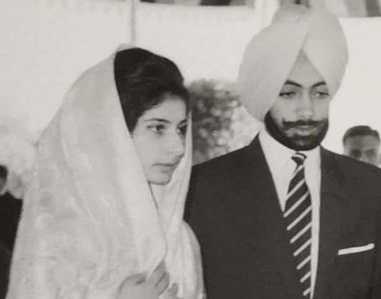

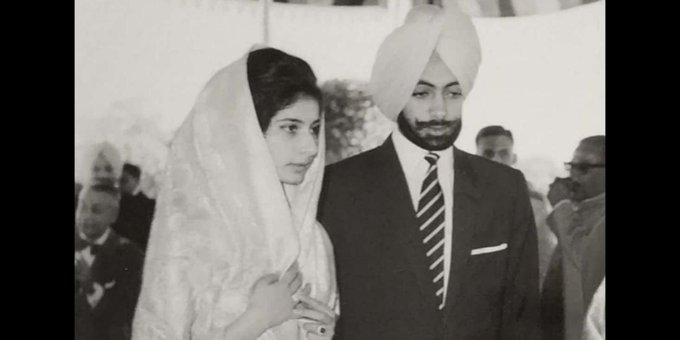
/arc-anglerfish-arc2-prod-mco.s3.amazonaws.com/public/2XF2WN5OO5DW5IKNANUQ4MWOIM.jpg)
